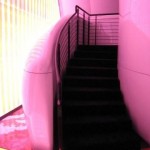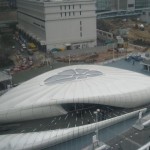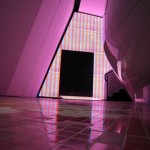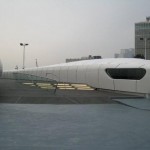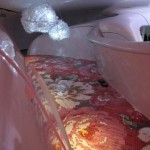Production Science played an integral part in the realisation of Ars Electronica’s ambitious 80+1 project. The project formed part of the Linz 2009 European Capital of Culture Year, and was sponsored by Voestalpina and Linz 09. As well as organising a virtual journey around the world, we were responsible for the construction of a temporary building in Hauptplatz, Linz and the collection of interactive art from around the world within. Our scope of work included project, budget and construction management and operation of the building for three months. We also constructed the technical framework for the ‘Global Window’ – a collaborative space designed to connect people and places worldwide in order to debate and share issues and create and explore social connections. More details: 80+1
Tag Archive for new media art
80+1 – A journey around the world in 80 days
Chanel Mobile Art
A unique world tour of a `nomadic art gallery`, touring a Zaha Hadid designed gallery to major city sites. Production Science were responsible for planning the art program as well as being responsible for technical and artist liaison, building services and shipping/international and cultural issues. We also provided all of the AV items. (for Chanel and Ove Arup)
The building and art fitted into 77 x 40ft containers and 4 x 747 Freighters. It was conceived by Karl Lagerfeld and designed by Zaha Hadid.
[youtube]http://www.youtube.com/watch?v=3Ik2Pz98wn4[/youtube]
Works were performed for ES Projects, Ove Arup & Partners and Chanel
Reviews:
Vogue Article
Reuters Report (& video)
Wallpaper
Elle
Marie Claire
More details: Chanel Mobile Art website
Millennium Dome
The Millennium Dome was built as a major visitor attraction to celebrate the start of the third millennium and like so many other visitor attraction projects it ran into financial problems principally caused by relentless optimism on the part of the operating company. Forecast to get 6M visitors but requiring 12M to balance the budget it required significant external support. It had many detractors but upon questioning virtually all of these had never visited the site and it had a reputation as an expensive but enjoyable day out and was more popular than Alton Towers and the London Eye during 2000.
The interior of the Dome had a central show and 14 exhibit Zones themed as:
Who we are:
- Body, sponsored by Boots, supported by L’Oréal and Roche (Branson Coates Architecture)
- Mind, sponsored by BAE Systems and Marconi (Office of Zaha Hadid)
- Faith comprised 5 sections: History of Christianity, Making of Key Life Experiences, How Shall I live?, Night Rain (a contemplation area designed by James Turrell and Faith Festivals Calender[7] (Eva Jiricna Architects with Jasper Jacobs Associates)
- Self Portrait, sponsored by Marks & Spencer (Caribiner with Lorenzo Apicella at Pentagram), sculpture design by Gerald Scarfe
What we do:
- Work, sponsored by Manpower Inc. (WORK)
- Learning, sponsored by Tesco (WORK)
- Rest (Richard Rogers Partnership)
- Play (Land Design Studio)
- Talk, sponsored by BT Group (Imagination Group)
- Money, sponsored by the City of London (Caribiner with Bob Baxter at Amalgam)
- Journey, sponsored by Ford Motor Company (Imagination Group)
Where we live:
- Shared Ground, was made from recycled card [8] sponsored by Camelot Group plc (WORK)
- Living Island (WORK)
- Home Planet, sponsored by British Airways and BAA plc (Park Avenue Productions)
(Source – Wikipedia)
Our involvement began with the technical planning of the Play Zone and expanded into the Money Zone before being asked by NMEC to take on the daily task of operating and managing all of the interactive exhibits under their control for the opening year.
Despite the fiscal problems the exhibits were a significant milestone in visitor experience and in particular we were proud to have been employed by Land Design to assist in curating and building the Play Zone.
Play Zone
The Play Zone was unique in that it had no sponsoring organisation and was devised as a space that interpreted the word ‘Play’ using new media art. Land Design were contracted to design and build the space and they in turn contracted Fraser Randall for project management and us for technical consultancy and management. Land turned to Ars Electronica for digital assistance and a whole visitor journey and movement system was devised that brought the visitor in from the inner loop walkway, gave them some preshow orientation and dropped them in at the top of the building onto a ramp that gave an overview of the exhibits before allowing visitors to experience unique digital play experiences. On their way out the visitors passed the reverse side of the orientation exhibits and realised that static objects had been brought to digital life on their reverse face by use of ‘peppers ghost’ screens.
Building the Play Zone
The curation and design of the Play Zone involved a number of visits all over the world to transfer the artist’s technologies and gain their confidence in our team to deliver their works.
Exhibits
Attractor
Orientation
Entry
Piano as Image Media
Phototropy
Music Table
Metafield Maze
Iamascope
Tug Of War
Kids Room
Video Jigsaw
Beyond the Page
Batak
Armchair Goalie
Cyclotron
Cats and Dogs
Exit sequence
